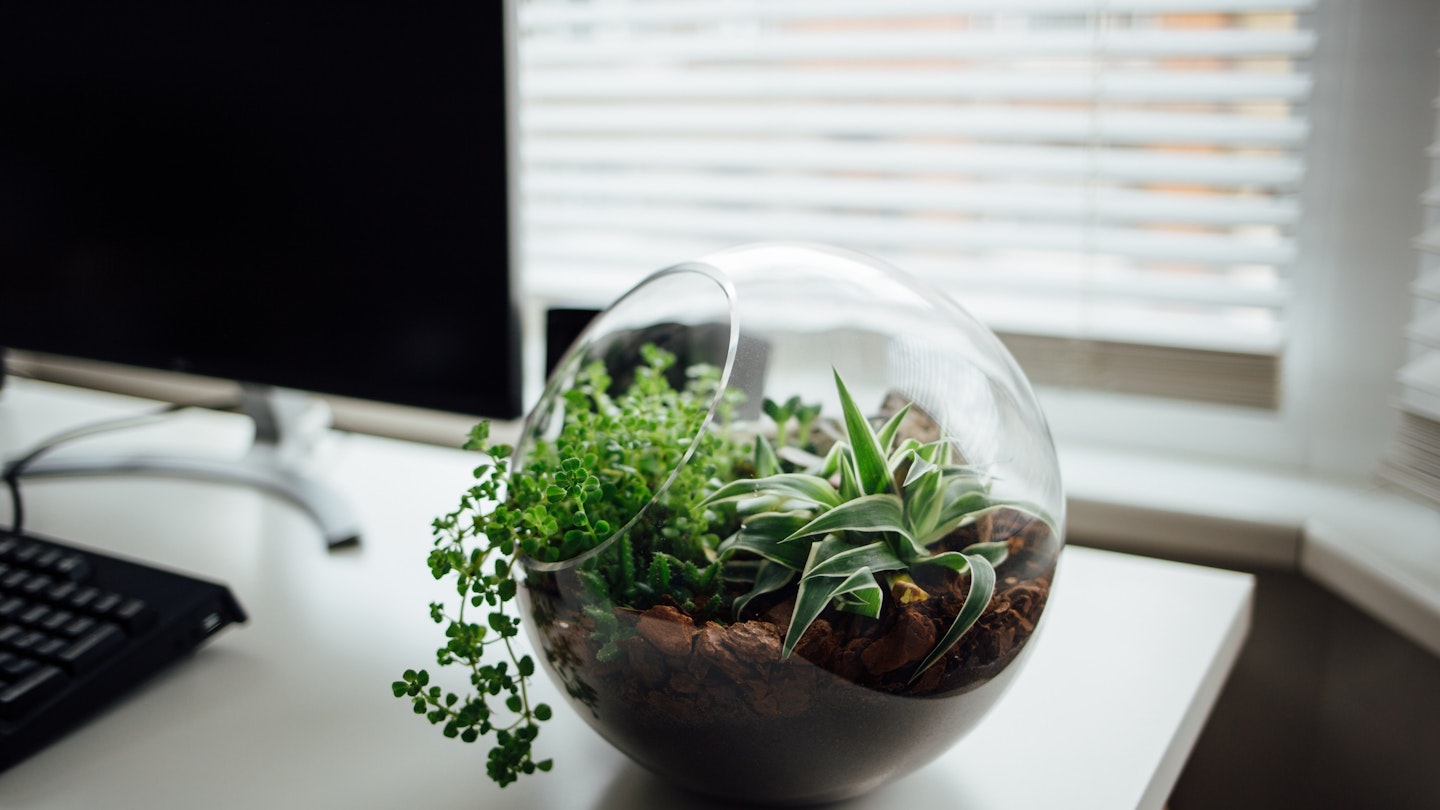Between the Chelsea Flower Show, Kew Gardens and the Barbican’s glorious conservatory, there are plenty of places to immerse yourself in a plant-filled haven.
But for those of us without gardens, recreating that beauty back home can be a challenge. I too want to forest bathe and frolic among greenery, but alas London property prices mean that many of us have to make do with houseplants.
Enter the terrarium, the next best green response to your inner Charlie Dimmock that will distinguish your living space and bring some greenery inside.
So what the heck is a terrarium?
A ship in a bottle situation but with a mini ecosystem in place of the boat: a terrarium acts like a sort of greenhouse (give or take the science bit) that you can hold in your hands and that’ll sit pretty on your windowsill. They range from desert terrariums and woodland terrariums to orchid terrariums and carnivorous terrariums.
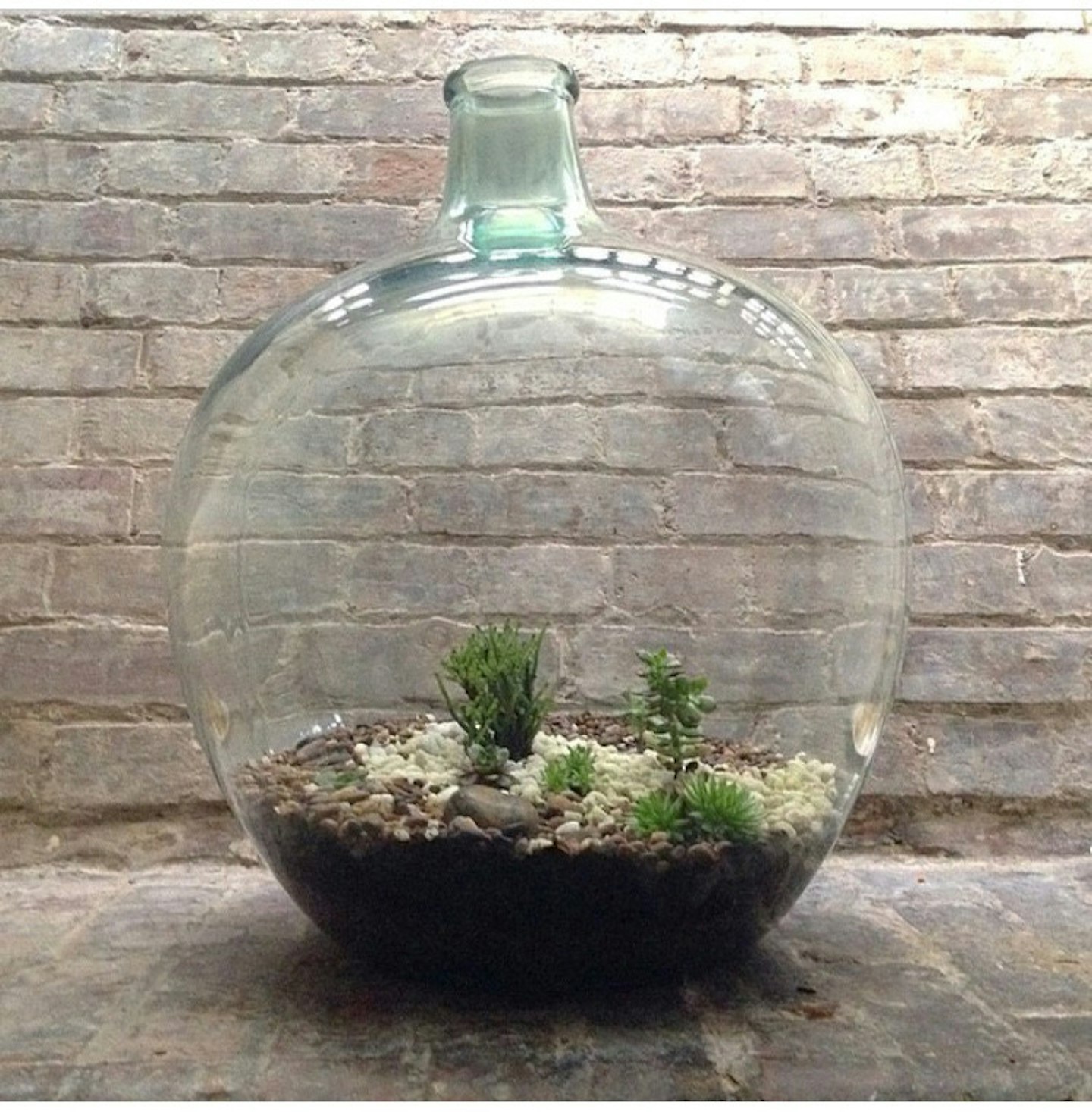
Where exactly do I begin?
As one half of girl boy duo London Terrariums, Emma Sibley explains: 'You can literally make one with an old jam jar and a bit of moss and can use any tools that you find around the house, for example an old cotton reel taped to a stick works perfectly for patting down the soil.'
'When we started, we were just using the pebbles from Tom’s front garden and cuttings we had taken from house plants of friends and family and the moss that we found in our gardens.'
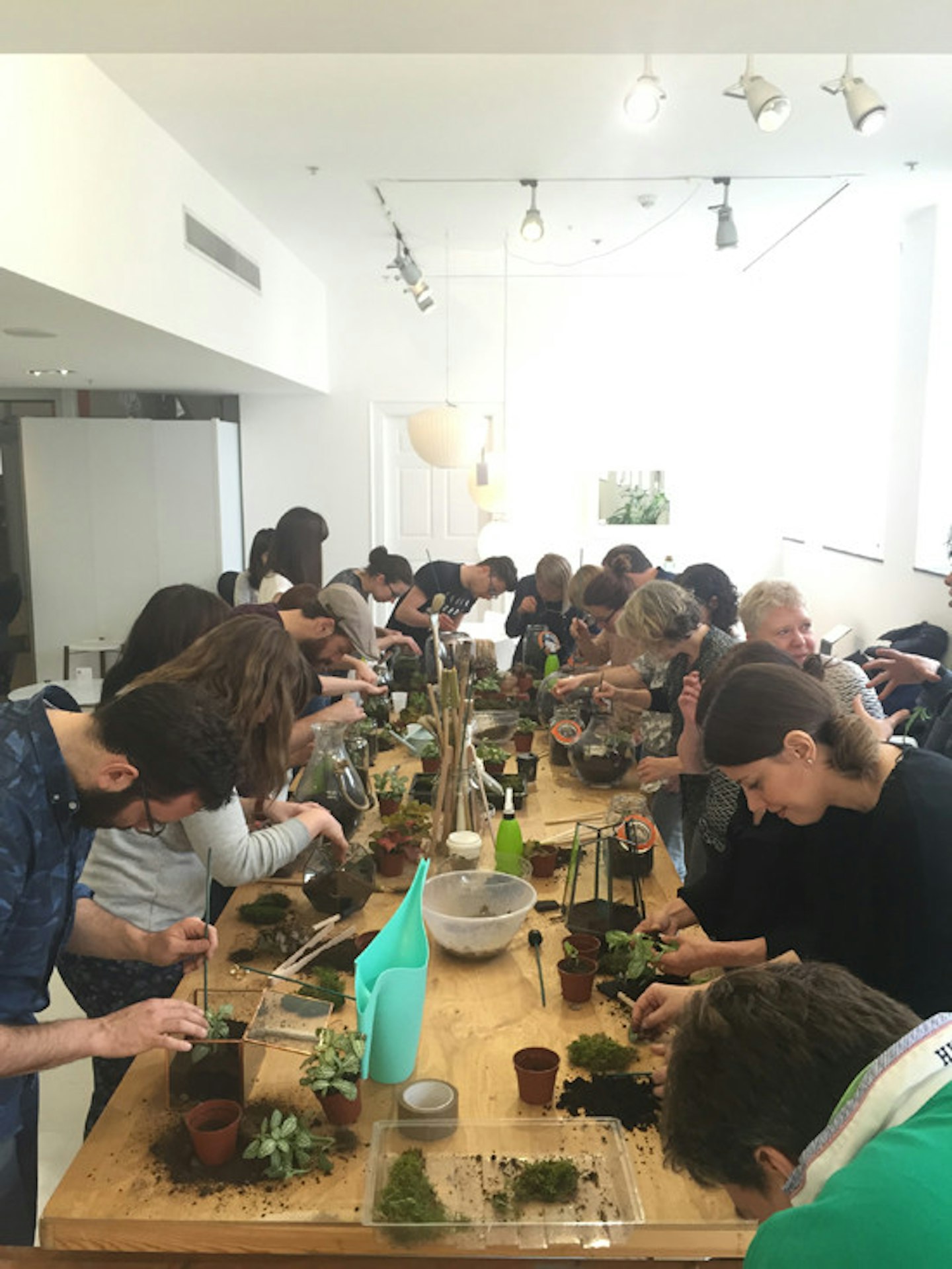
I’m not really much of a preserves person.
No worries, LT swear by four key vessels: Hanging Globes, Kilner Jars, Demijohns and Carboys (pretty much the same as a demijohn). 'For our workshops we use the Kilner as it is easiest for people to get their hands in and pot the plants,' states Emma.
Talk to me about specifics.
Emma and Tom (Murphy, partner in crime at LT) make haste for Covent Garden New Flower Market at 4am most mornings, but B&Q et al work just as well for picking up the basics – and more importantly boast reasonable opening hours.
Vessel aside, the basics commonly consist of soil, stones and petite potted plants; horticultural charcoal (hit up eBay) is a must for keeping the terrarium clean. Low on funds? Get foraging. A funnel, spoon, stick and paintbrush will also help with shovelling the soil, patting it and cleaning the vessel.
Now what?
Start with the stones, follow with the charcoal, soil and plants. Finish up with a spritz of water.
How often should I water it?
A typical Google search will throw up several different answers, but Emma and Tom attest that the condensation formed in the vessel hydrates the plant (so you don’t have to).
So I’m good to go?
Almost. 'We have a grace period of a few weeks,' Emma told us, 'during this time the plants need to adapt to their surroundings within the vessel and the terrarium as a whole will need to acclimatise to the surrounding that it has been placed in.
'You may need to keep opening and closing the lid, until the conditions inside the terrarium reach their correct point, you don’t want it to be too moist and humid inside but at the same time the terrarium cannot be dry, finding the balance is key. You will need to monitor your terrarium though, as you are dealing with living things.'
What if I wanna go wild and put a cacti or succulent in the terrarium?
Sure, but the vessel will need to be kept open with a really good cycle of air says Emma.
Sweet, now where’s the best spot to show off my new skillset?
Prop it by the windowsill for optimum sunshine vibes and maximum exposure.
READ MORE: 7 Houseplants You Can Grow Easily At Home
Debrief Grow Your Own Houseplant Slider
 1 of 7
1 of 71. Cast Iron Plant
If you couldn't guess from the name, these guys are tough as hell. Forget to water it? NBD. Zero light in your flat? That's fine. It takes a while to grow but they get pretty big (about 90cms) and doesn't need any special soil or anything. Grow from an existing leaf if you want to speed the process up a bit though.
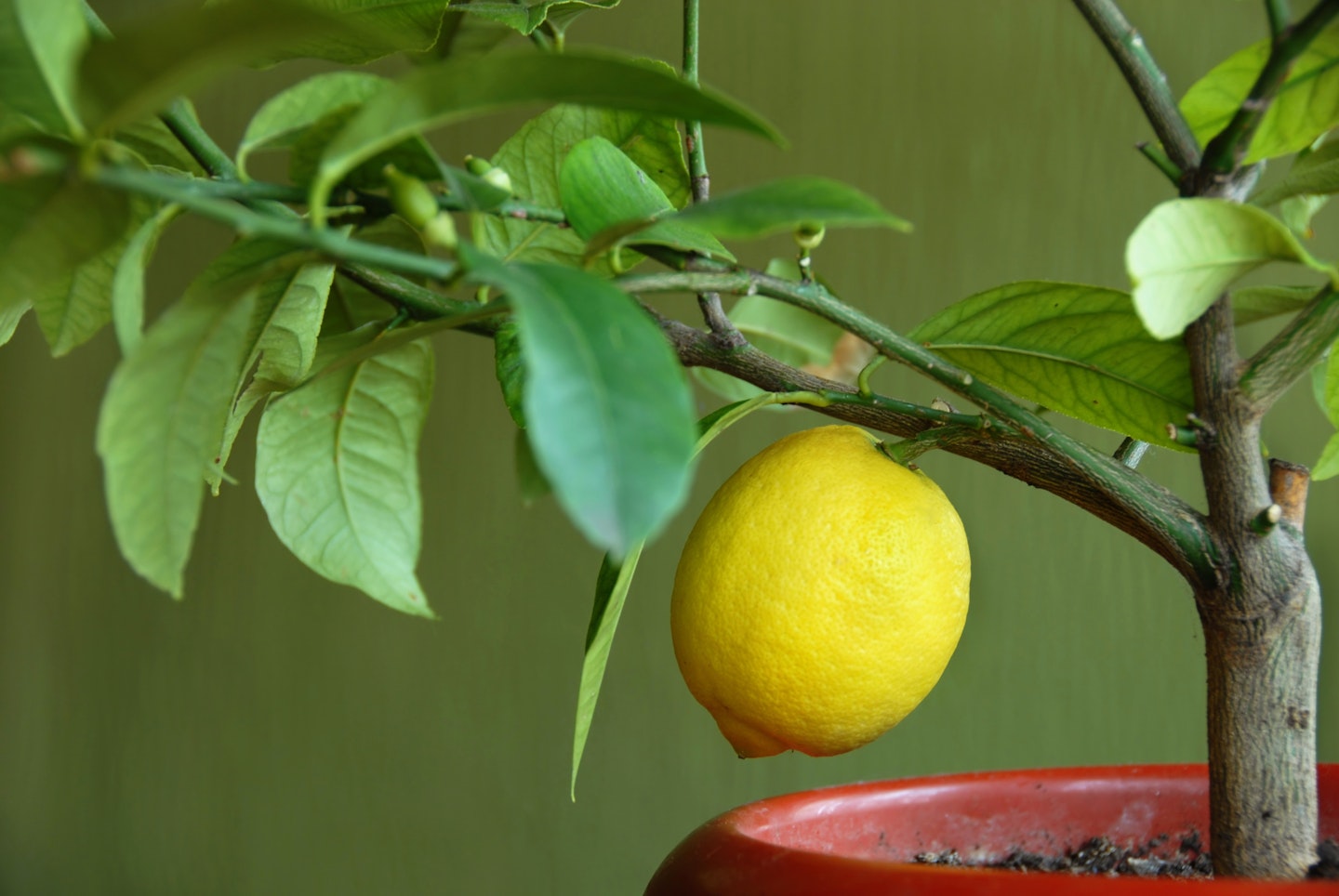 2 of 7
2 of 72. Citrus Plant
Don't wait for life to give you lemons, mate. Grow your own! The main thing to be aware of is the fact that these plants need a lot of good light so pop 'em in a nice and bright room for good results. Lemons are the best place to start in the UK, and you'll want to start these guys outside in the summer and bring them in for winter. If you're nervous about the pressure of growing something edible from scratch for the first time, locate a nursery and buy a one or two year old dwarf tree to grow lemons at home.
 3 of 7
3 of 74. Chinese Evergreen
The key with these nice and resilient plants is to make sure you put it in some well draining soil. It deals really well with rubbish light, dry air and little water, so maintenance wise you're golden. You might be hard pressed to find seeds if you want to start this plant's journey from the very beginning but if you get a small one that you want to occupy some major space, just make sure you keep them away from pesky drafts because it'll make the leaves sad.
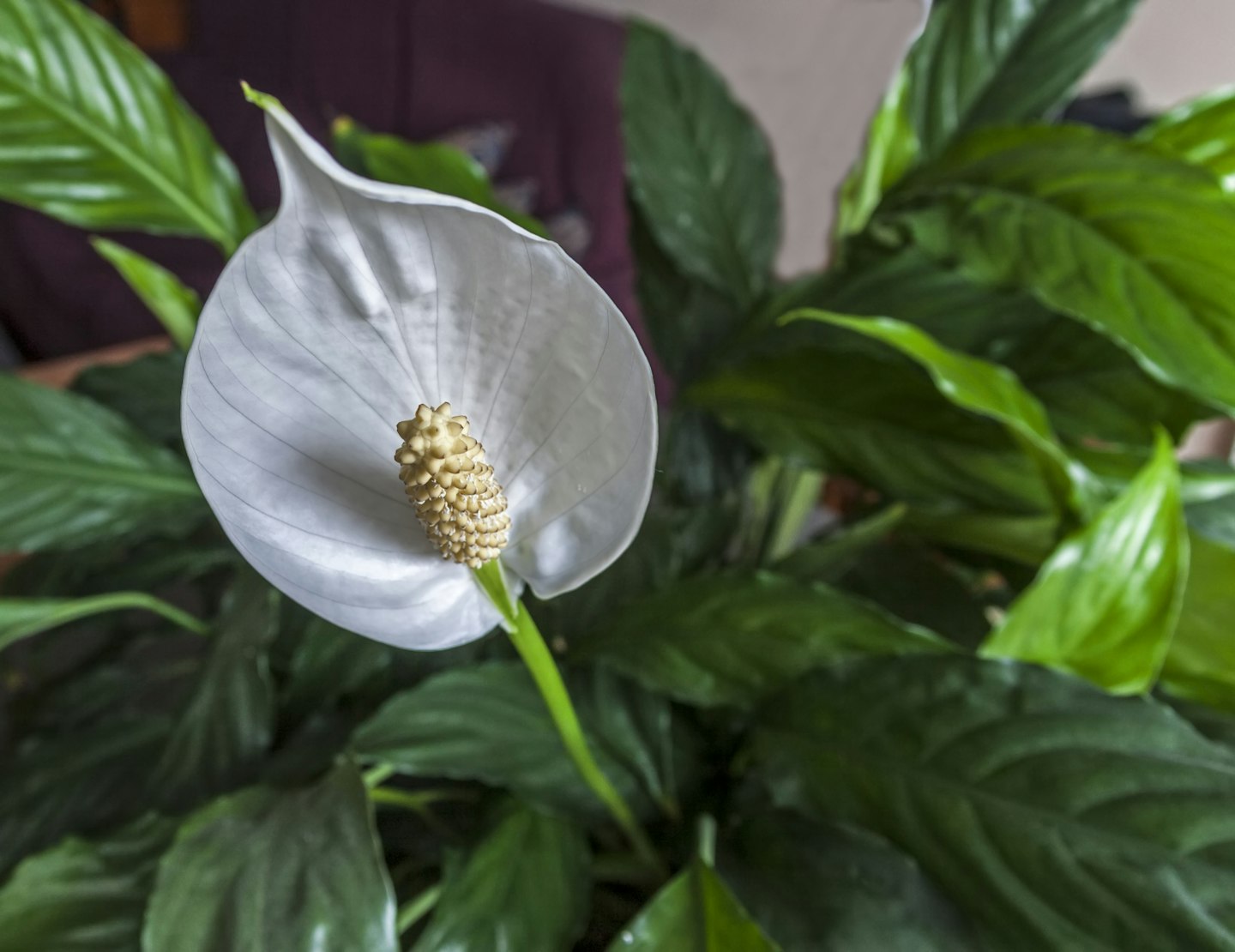 4 of 7
4 of 73. Peace Lily
Peace Lilies aren't just pretty plants, they also help get rid of some of the airs toxins and pollutants. If you fancy growing your own, you'll want to sow a seed in a good soil mix that you can get from any and every garden center, and water little and often. We're talking about a year or so wait to see something of substantial flower and size, but if they don't seem to be producing any flowers at all they're probably not getting enough light. Keep a close eye on them too, because they'll probably outgrow their containers pretty quickly so you'll need to repot them.
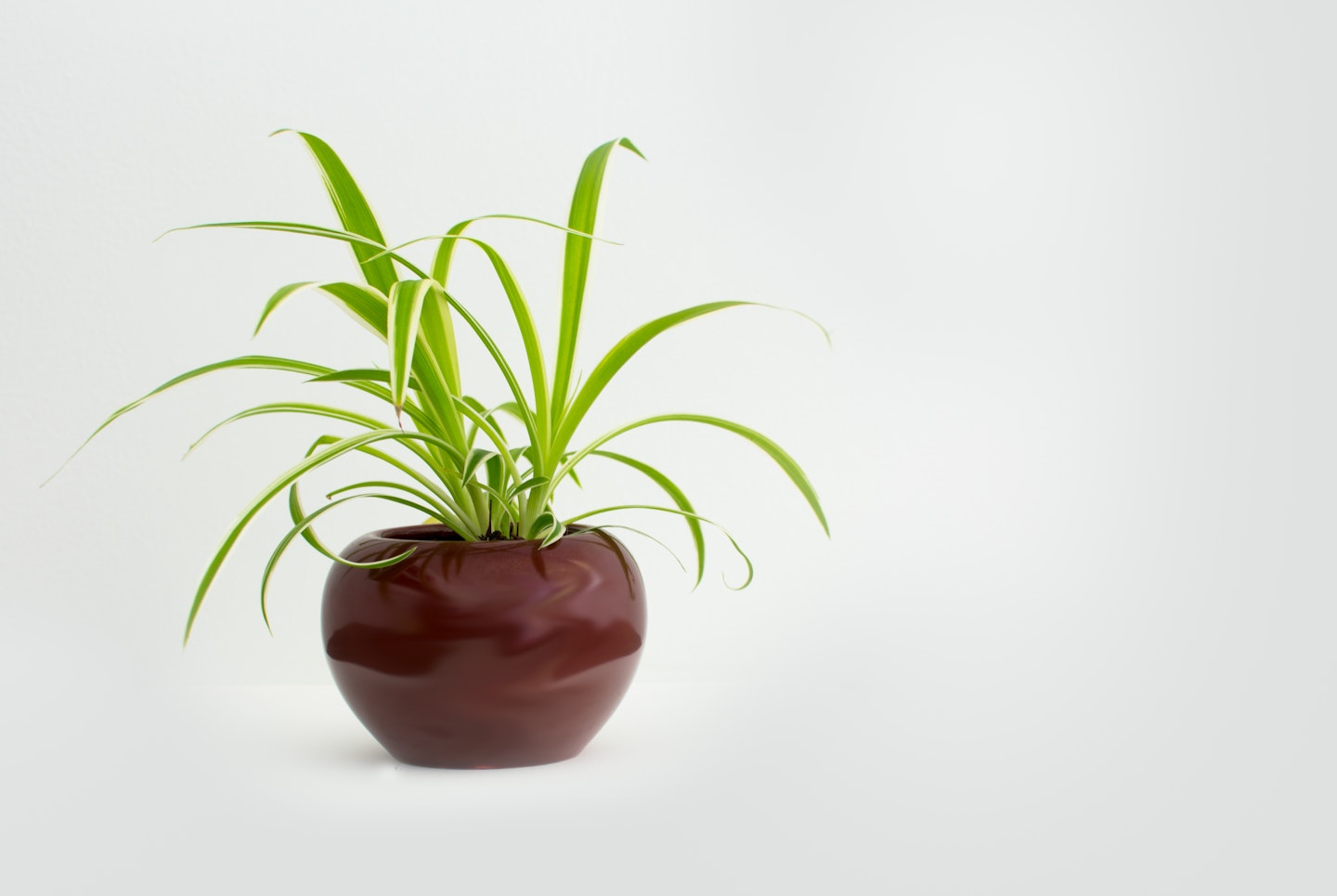 5 of 7
5 of 75. Spider Plant
Spider plants grow pretty quickly so if you buy one and find yourself with loads of little plantlets, you can just pot those up to grow yourself a little spider plant family. Just make sure the baby spider plants have got roots and pop them in a soil-based potting mix and water just regularly enough to keep the soil moist.
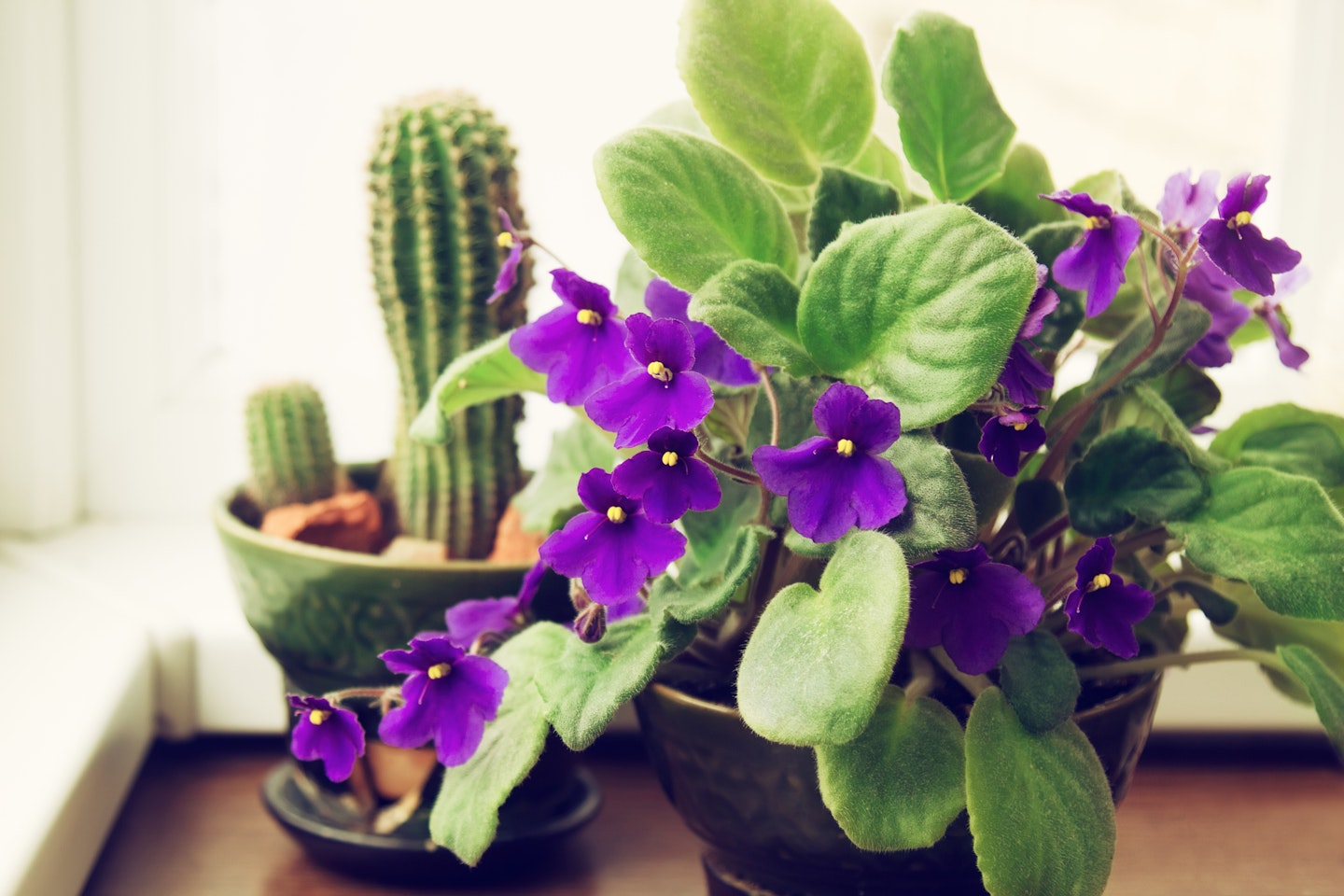 6 of 7
6 of 76. African Violets
As beautiful as African Violets are, before you task yourself with growing your own you'll want to make sure you've picked up the appropriate soil before hand. You'll be able to find special pre-made mixes around, and then it's just a matter of making sure you fertilise them (not while they're in bloom though) to help them grow and avoid getting the leaves wet when you water it.
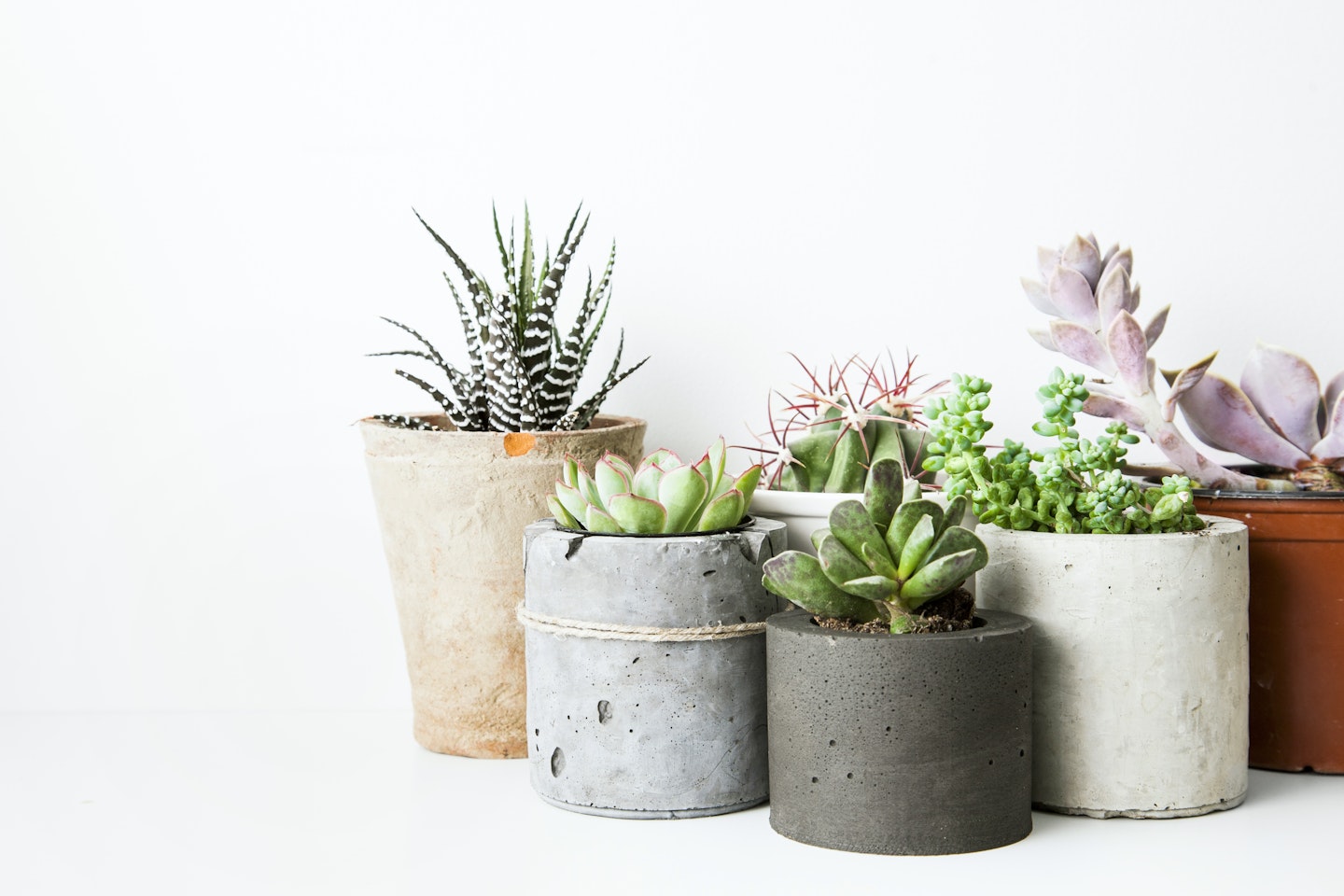 7 of 7
7 of 77. Succulents
Yep, it's our buddies the succulents again. Growing them yourself means popping them in a potted container with drainage holes before confining them to a fancy glass terrarium, okay? Their seeds are teeny tiny so you need to make sure they're well covered with soil so that they aren't moved by over watering or drafts around the house. They grow best in humid environments of course, so you might want to try covering them with something like a shower cap (on The Greedy Vegan's recommendation) until they start sprouting.
